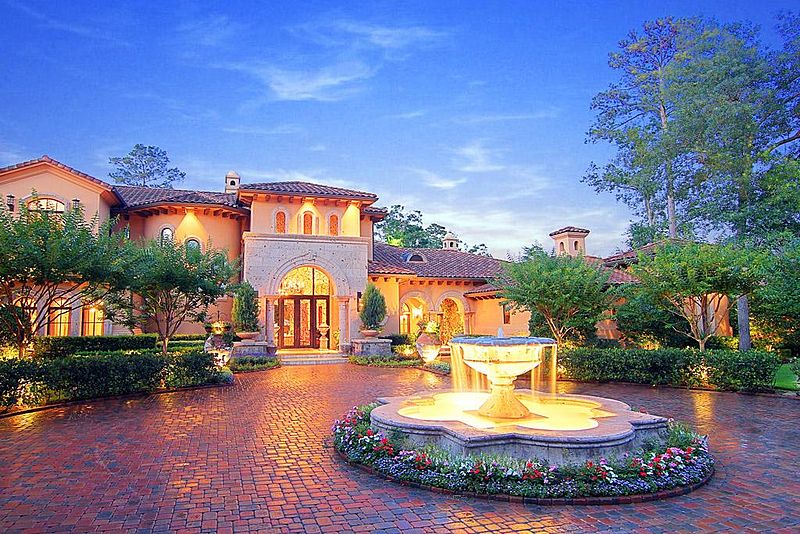A brief history lesson on one of the great planned communities of the 20th Century.
In 1964, George P. Mitchell of the Mitchell Energy and Development Copr. Acquired 2,800 acres of timberland located 27 miles north of Houston, the last remaining woodlands in the projected northern growth path of the metropolitan region. In over 800 separate land transactions, Mitchel acquired additional land in the area, amassing 16,939 acres for the new town.
During the late 1960s, the federal government developed an interest in the new town’s construction that culminated in Title VII of the Urban Growth and New Community Development Act of 1970. Title VII pro vided 15-year interest-free loans and guarantees of up to $50 million on bonds and notes issued by developers. In return, developers were required to build diversified communities, provide for local employment and low- and moderate-income housing, and adopt an “affirmative action” attitude with regard to race.
With one-third of the project site located in the 100-year flood plain and the remainder poorly drained, Mitchell’s director of planning and design urged him to hire Ian McHarg, who had just published the highly acclaimed Design with Nature, as his primary planning consultant.
McHarg’s ecology-based plan dictated the placement of arterial streets on ridge lines with intense develop ment located near major roads and inter sections. The plan further called for dense development to be concentrated on im pervious soils and for minor streets to be built as berms to impede surface flows over permeable soils and thus optimize recharge and minimize runoff.

By Trey Perry – http://perrygraph.com/collections/woodlands/products/forest-bridge, CC BY 3.0, https://commons.wikimedia.org/w/index.php?curid=40640541
In the revised plan for The Woodlands, 23 percent of the site was to remain as natural open space, with six villages each of which was to be provided with diverse housing opportunities, nursery and daycare centers, schools, churches, offices, a retail center, and recreational facilities. A metropolitan center of 1,000 acres of retail businesses and offices would serve the entire community and be connected to the six villages by bicycle and walking trails. An industrial area would provide local employment. On August 2, 1972, HUD awarded Mitchell a $50 million loan guarantee, pro claiming The Woodlands to be “the most environmentally responsible and innovative of all the new communities”.
The recession of 1972 brought an end to a national housing boom just as development of The Woodlands began. Then, in January 1973, President Nixon imposed a moratorium on all federal housing programs, including Title VII and the Section 235 and 236 subsidies. Tight money, high interest rates, increasing construction costs, and the federal government’s failure to provide promised financial support drove Mitchell to the edge of insolvency. But, on the security of his own energy-based resources, Mitchell borrowed $15 million on the private markets and saved The Woodlands.

At the opening ceremony on October 19, 1974, The Woodlands was confidently projected to have a population of 150,000 and 40,000 jobs by 1995. In fact, financial conditions at The Woodlands were desperate and worsening. A nationwide search for industries willing to relocate to The Woodlands failed to attract a single industry, leaving Mitchell with 100,000 square feet of vacant industrial space in what was supposed to have been a local-employment-based community; moreover, local retail trade was marginal.
December 1974 saw Mitchell shift away from environmental and social goals to a strategy of marketing for sheer survival. He reduced his staff from 365 to 160, abolished his social planning division, and focused on marketing to an upscale market. Conditions improved during the summer of 1975 such that, during 1976, 773 new homes were sold, three schools were built, and local industry moved in, including Continental Oil and Texaco. In 1977, a second golf course was built and construction started on a second village. From an operating loss of $2.8 million in 1977, revenues soared to an $8.7 million operating profit in 1979. By 1980, The Woodlands counted 8,818 people and a permanent employment base of 3,350.

By Linda MacPhee-Cobb – originally posted to Flickr as The waterway, CC BY-SA 2.0, https://commons.wikimedia.org/w/index.php?curid=4246213
In 1981, a year of national recession with housing starts at their lowest level in 35 years, The Woodlands flourished as the “hottest” real estate undertaking in America. The upscale environment attracted new business to the new town, bringing well paid professional and white-collar employees.
The Woodlands continues to develop today. According to The Woodlands Development Company, the population was 107,769 as of a January 2014 estimate, an increase of 93.7% over its population of 55,649 at the 2000 census.

